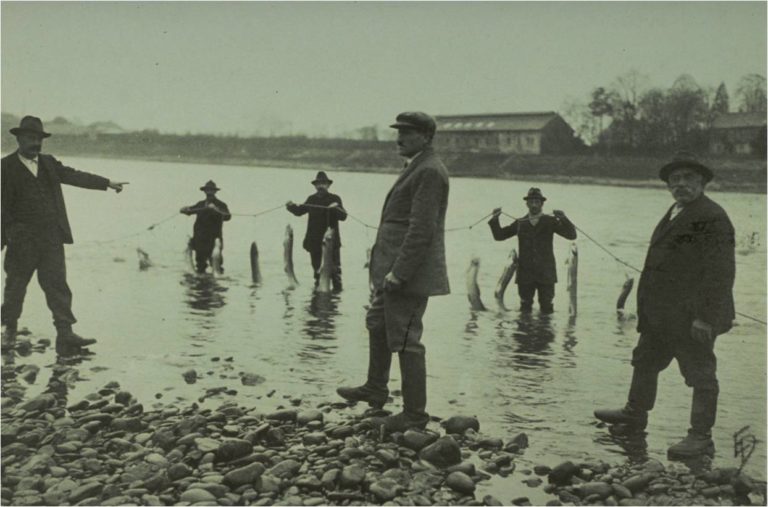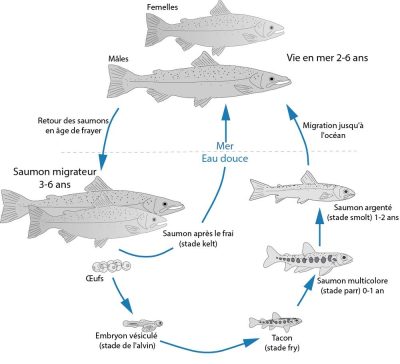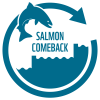THE SALMON IN DIRE STRAITS
The Atlantic salmon (Salmo salar), this extraordinary migratory species, prepared to swim thousands of kilometres between Greenland and Europe’s rivers, has virtually disappeared from what was once its natural habitat.
90% of wild salmon populations considered to be “in good health” are concentrated in just four countries: Scotland, Ireland, Iceland and Norway. From a global perspective, apart from these pockets, the status of this species is considered as critical (WWF, 2001).
In Europe’s large river basins, where thousands of salmon congregate every year, only a few hundred individuals remain. Global stocks of Atlantic salmon have decreased by 75% over the last 20 years, disappearing entirely from 15% of European and North American waterways where they originally occurred.
The Rhine was once the largest salmon-bearing river in Europe. A hundred years ago, a million salmon were migrating between Greenland, the Rhine and its tributaries all the way up as far as the Swiss Alps. But the original strain of these Rhine fish has suffered great loss over the years. By the 1950s, salmon had gradually disappeared from the Rhine river basin.

In the past 20 years, considerable effort by the International Commission for the Protection of the Rhine (ICPR) has improved water quality, the ecological continuity of the river and partly restored the biodiversity of the Rhine basin. A number of major modifications have been made to Rhine tributaries to make dams more surmountable for fish, in particular by the construction of fish passes and ladders. A reintroduction plan for salmon, initiated by the ICPR in 1991 as part of an international program, has been very successful. Other migrating fish (sea trout, sea and river lamprey as well as shads) were also reintroduced, and now fish migrations have begun to become established. Fish are once again able to swim upstream from Rotterdam to the Rhinau dam, as well as into some of the lower tributaries of the Rhine, in particular the Sieg.

